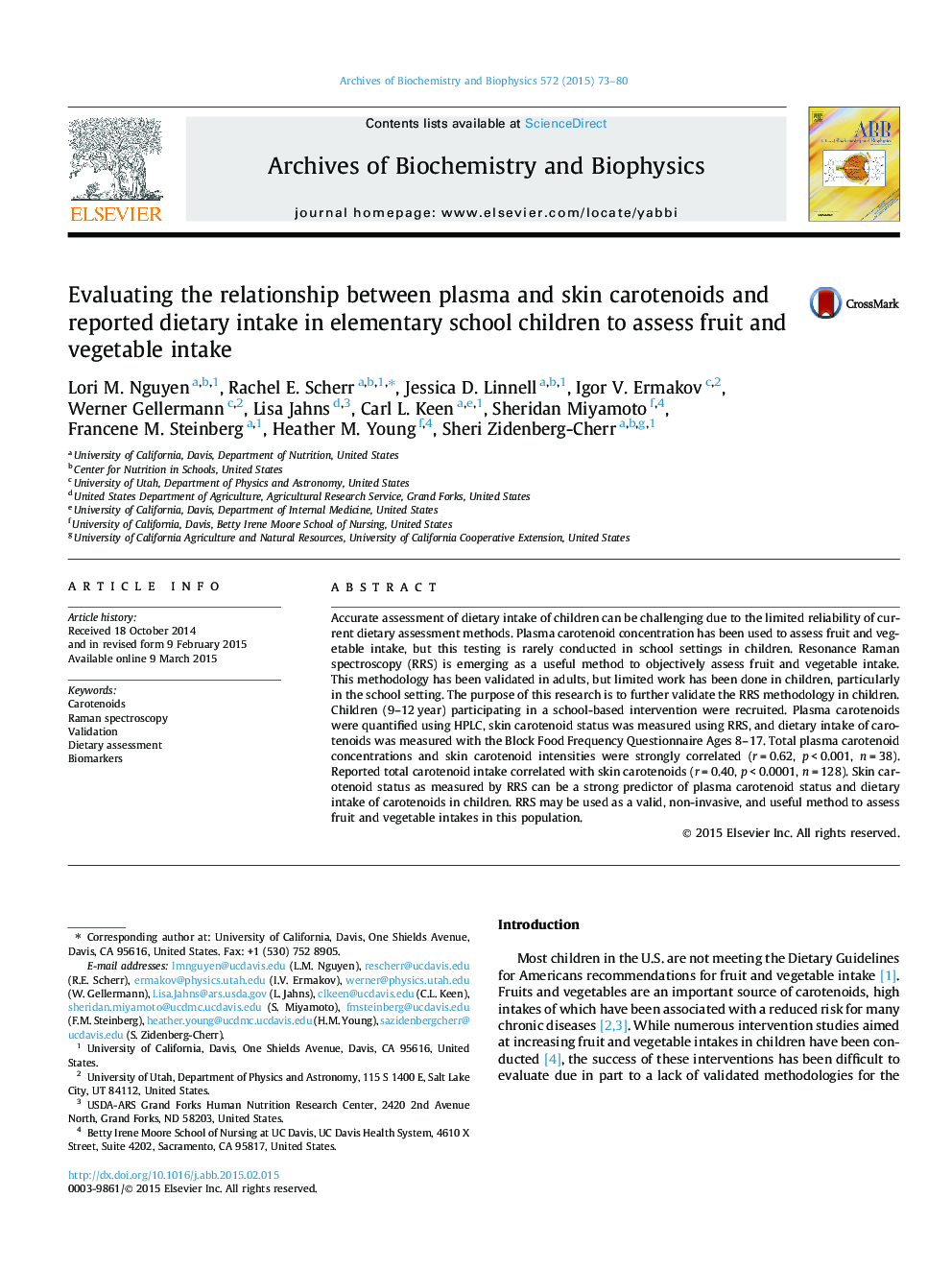| Article ID | Journal | Published Year | Pages | File Type |
|---|---|---|---|---|
| 8289785 | Archives of Biochemistry and Biophysics | 2015 | 8 Pages |
Abstract
Accurate assessment of dietary intake of children can be challenging due to the limited reliability of current dietary assessment methods. Plasma carotenoid concentration has been used to assess fruit and vegetable intake, but this testing is rarely conducted in school settings in children. Resonance Raman spectroscopy (RRS) is emerging as a useful method to objectively assess fruit and vegetable intake. This methodology has been validated in adults, but limited work has been done in children, particularly in the school setting. The purpose of this research is to further validate the RRS methodology in children. Children (9-12 year) participating in a school-based intervention were recruited. Plasma carotenoids were quantified using HPLC, skin carotenoid status was measured using RRS, and dietary intake of carotenoids was measured with the Block Food Frequency Questionnaire Ages 8-17. Total plasma carotenoid concentrations and skin carotenoid intensities were strongly correlated (r = 0.62, p < 0.001, n = 38). Reported total carotenoid intake correlated with skin carotenoids (r = 0.40, p < 0.0001, n = 128). Skin carotenoid status as measured by RRS can be a strong predictor of plasma carotenoid status and dietary intake of carotenoids in children. RRS may be used as a valid, non-invasive, and useful method to assess fruit and vegetable intakes in this population.
Related Topics
Life Sciences
Biochemistry, Genetics and Molecular Biology
Biochemistry
Authors
Lori M. Nguyen, Rachel E. Scherr, Jessica D. Linnell, Igor V. Ermakov, Werner Gellermann, Lisa Jahns, Carl L. Keen, Sheridan Miyamoto, Francene M. Steinberg, Heather M. Young, Sheri Zidenberg-Cherr,
